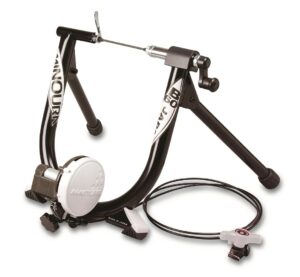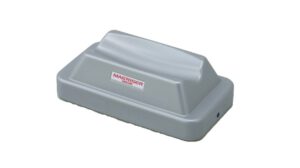Bicycle trainer
When autumn begins to approach and it's time to put the bike away for the winter. Or do we really need to put it aside, can we not continue cycling inside instead? Well, of course we can. But then we need a Bicycle Trainer.
With a bicycle trainer, we can continue to train all year round and receive high-quality structured training throughout the winter. There is everything from "stupid" trainers where you can not adjust the resistance, to very advanced smart interactive trainers that let an app control the resistance so that you always train at the right level. Which trainer is right for you? Continue reading and we will go through the different options.
What type of trainer should you choose
When we talk trainers, we usually talk about three different types of trainers. The simplest of them all are so-called ROLLERS or ROLLERS in English. Consists of 3 rollers on which you place the bike and then you just have to pedal. Requires a lot of balance to not fall off and you can not get as much extra resistance beyond what you can get with the gears.
The next type of trainer is the CLASSIC TRAINERS on which the whole bike is mounted and where the rear tire goes against a roller that brakes more or less a lot with slightly different types of resistance. Liquid resistance makes it heavier the harder you pedal and can be used without electricity. Magnetic resistance works in a similar way with the difference that you can regulate the resistance. Some magnetic trainers are also smart and can be connected to apps that regulate the resistance automatically.
Finally, we have DIRECTLY DRIVEN TRAINERS where you remove the rear wheel and mount the bike directly on the trainer where the cassette is also located. The resistance is adjusted electronically and most direct-drive trainers are smart and interactive where the resistance can be controlled automatically by the app you use. Perfect if you want to use one of the different apps available for your training. The slightly more expensive models are able to simulate a larger slope if you e.g. uses Zwift, which gives you a very realistic cycling feel.
To consider when choosing a bicycle trainer
Braking force / Resistance
Higher braking power means that the trainer can simulate slopes with a higher percentage and gives a very realistic feeling if you are looking to climb uphill or when you run hard interval workouts with large power differences.
Higher braking power also means that you do not have to shift so much when driving your pass and then can keep a straighter chain line. A straighter chain line means that it will also sound a little smaller.
Smart or Stupid trainer
If you want to have fun when you train and get some help on the stack, we recommend that you buy a smart and interactive trainer. A smart trainer can be connected to several different apps that can help you with your training and often has a built-in power meter that can show what effect you are on when you cycle. The effect can then be used to create training programs or compete with others at the same level. The trainer can also automatically adjust the resistance at intervals so that all you have to do is pedal. Tips on apps can be seen here next. To use the apps, you need a computer, tablet or mobile. If you want to connect to a computer, you need an ANT + receiver that you connect to a USB port. If you have a tablet or mobile, you can use bluetooth. Check what your trainer can do.
Trainer accessories
There are some extra accessories that can be good to have when driving your trainer. The accessories depend a bit on the type of bicycle trainer you use, but here we still go through which accessories can be good to have!
A heart rate band helps you keep track of your heart rate during the trainer session, which helps you to lie on the right load and facilitates the analysis of the training afterwards for those who like a little geekiness. There are bands that send via Ant + and there are bands that also send via Bluetooth. Wahoo Tickr sends via both Ant + and Bluetooth and is a secure choice to be able to connect to cycling computers, phones and computers.
If you have a trainer where you drive the tire against a roller, it can be good with a trainer tire. Trainer tires are significantly more durable than a regular tire (you do not have to wear out your regular tires), they are quieter and you avoid a lot of rubber dust that comes off the tire.
A trainer mat that you put under the trainer protects the floor from sweat (Yes, you will get sweaty when you ride indoors.). The mat also increases stability and attenuates the sound from the bicycle trainer. To further manage the sweat, a sweat guard can be a good idea. This is mounted on the bike where it prevents sweat from dripping down on the frame. Sweat can be easily corrosive over a long period of time and it is therefore extremely important to think about where all the sweat goes!
If you have a classic bicycle trainer, it is good with front wheel support to make the bicycle stand straight. Of course, it is possible to use a piece of wood or a stack of books as well, but since the wheel is more or less fixed in a specially adapted front wheel support, this is something we strongly recommend! If you do not use the support, the bike will lean forward a little.
Even more sweat-handling stuff! To sweat less, it is good if you use a fan when cycling. Any fan works. A fan that you can connect to your trainer, power meter or heart rate monitor and then control the speed of the fan depending on your effort. Just like the wind outside. The harder you drive the more it blows.
Displays all 2 results


